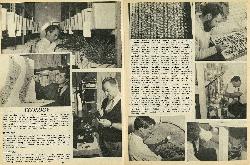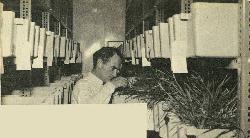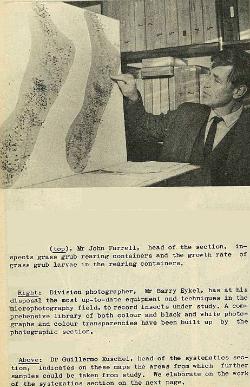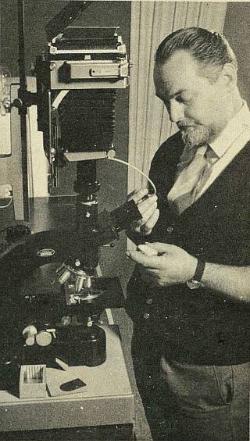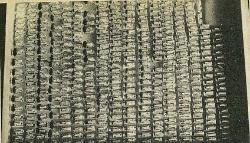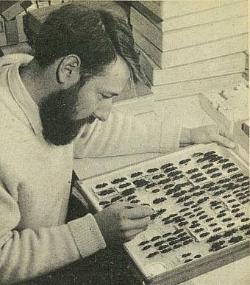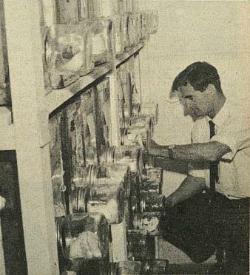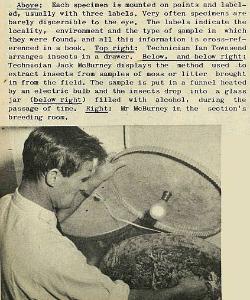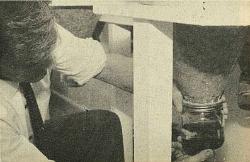50
Ecology
The mission of the ecology section is to study the relationships of insects to their environment and its present prime objective is grass grub and porina investigation. Quite recently a new rearing room was built for the section, and in it (top), Mr John Farrell, head of the section, inspects grass grub rearing containers and the growth rate of grass grub larvae in the rearing containers.
Systematics
Dr Guillermo Kuschel, head of the systematics section, indicates on these maps the areas from which further samples could be taken from study. We elaborate on the work of the systematics section on the next page.
Photography
Division photographer, Mr Barry Eykel, has at his disposal the most up-to-date equipment and techniques in the microphotography field, to record insects under study. A comprehensive library of both colour and black and white photographs and colour transparencies have been built up by the photographic section.
51
The systematics section classifies insects according to their relationships. But there is much more to the job than that, for in order to get the relationships, the scientists have to get into such fields as ecology and distribution patterns. As a result of the classifications made, identifications of insects throughout the country can be made. One of the section's most important tasks is to collect insects and to provide material for these studies, and it is the section's intention to do a full survey of all insects and get as complete a collection as possible of the whole insect fauna of New Zealand. To that end, members of the section travel all over New Zealand, in all regions from alpine to shore line and in the islands, collecting this fauna. Before 1964, when the section was started, there was no systematics section within the division. Now it is collecting in a week more specimens than were collected in a year before 1964. Dr Kuschell, head of the section, is a Chilean who joined the division in 1962. He is a world authority in his own sphere, weevils.
Each specimen is mounted on points and labeled, usually with three labels. Very often specimens are barely discernible to the eye. The labels indicate the locality, environment and the type of sample in which they were found, and all this information is cross-referenced in a book.
Technician Ian Town send arranges insects in a drawer.
Mr McBurney in the section's breeding room.
Technician Jack McBurney displays the method used to extract insects from samples of moss or litter brought in from the field. The sample is put in a funnel heated by an electric bulb and the insects drop into a glass jar (below right) filled with alcohol, during the passage of time.


